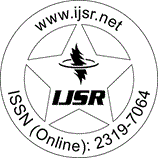Downloads: 98 | Views: 366 | Weekly Hits: ⮙2 | Monthly Hits: ⮙2
Research Paper | Medical Science | Bulgaria | Volume 9 Issue 9, September 2020 | Popularity: 7 / 10
Variable Response of Coronary Flow to Vasodilators and Risk of Ischemia in Slow Coronary Flow
Niya Emilova, Stefan Denchev
Abstract: Our purpose was to compare the incidence of positive stress electrocardiographic tests (EST) in patients with slow coronary flow phenomenon (SCFP) and in patients with non-obstructive coronary disease (NCAD) with slow flow associated with left ventricular hypertrophy (LVH) secondary to hypertension (SCFLVH). Our second objective was to study the response of epicardial coronary flow to the intracoronary glyceryl trinitrate (GTN) given concomitantly with conventional anti-ischemic medication. The coronary flow was assessed using the corrected thrombolysis in myocardial infarction (TIMI) frame count method (cTFC) in 86 consecutive patients, with cTFC >25 frames and unstable angina treated with β-blocker (BB) alone, with BB and oral nitrate (BB+N) and with β-blocker (BB), calcium channel blocker (CCB), with or without oral nitrate, BB+CCB±N before and after the intracoronary injection of glyceryl trinitrate, GTN (200 µg). A subgroup of 57 (65.5 %) patients underwent EST conducted. Results: The incidence of positive EST was significantly positively associated with the smaller indices of the end-diastolic, systolic volumes and the intake of BB as monotherapy. Least positive EST were observed on combined therapy that included CCB. The intracoronary nitrate administration lead to as tendency improved coronary flow at rest in the subgroup with SCFLVH (cTFCn - 33.9±10 frames vs 39.7±14.8 frames, p= 0.091). This response was most pronounced in patients with SCFLVH receiving combined therapy with BB+CCB±N (SCFLVH vs. SCFP - cTFCn 29.2±4.6 frames vs.41.6±12.1 frames, p-NS). In conclusion, in absence of obstructive coronary disease, partial reversibility of the increased coronary vascular resistance after intracoronary GTN is observed at rest only with therapy that included CCB. This relationship is pronounced in NCAD and slow flow secondary to hypertensive disease in contrast to SCFP. Greater cardiac volumes may partially contribute to lower risk of stress-induced ische
Keywords: slow coronary flow phenomenon, left ventricular hypertrophy, TIMI frame count, nitrates, calcium channel blockers, exercise stress electrocardiography
Edition: Volume 9 Issue 9, September 2020
Pages: 800 - 805
Make Sure to Disable the Pop-Up Blocker of Web Browser
